Table of Contents
Quality Service Guarantee Or Painting Free

Get a rental agreement with doorstep delivery

Find the BEST deals and get unbelievable DISCOUNTS directly from builders!

5-Star rated painters, premium paints and services at the BEST PRICES!
Loved what you read? Share it with others!
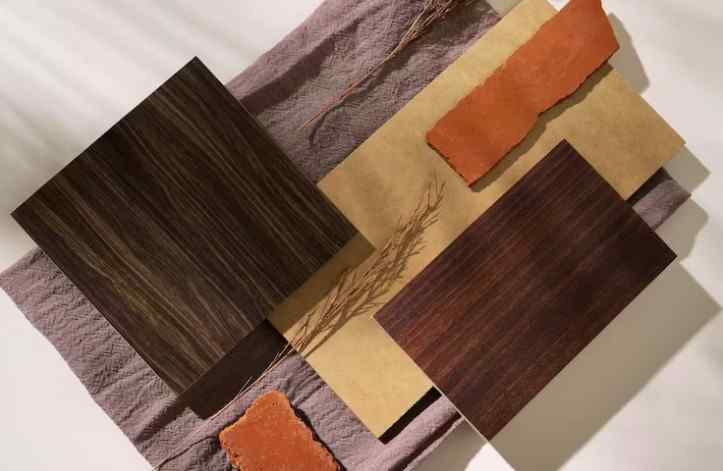

Submit the Form to Unlock the Best Deals Today
Help us assist you better
Check Your Eligibility Instantly

Experience The NoBrokerHood Difference!
Set up a demo for the entire community
Laminate vs Veneer: Which Finish Suits Your Furniture?
Table of Contents
Overview: When it comes to furniture finishes, laminate and veneer are two of the most popular options available. While they may look similar, there are significant differences between the two that can affect the appearance, durability, and cost of your furniture.
In this article, we will explore the differences between laminate vs veneer finishes, their pros and cons, and how to choose the right finish for your furniture.
Laminates and Veneers Explained

Before we dive into the differences between laminates and veneers, let's first define what they are and how they're made.
Quality Service Guarantee Or Painting Free

Get a rental agreement with doorstep delivery

Find the BEST deals and get unbelievable DISCOUNTS directly from builders!

5-Star rated painters, premium paints and services at the BEST PRICES!
What is a Laminate Finish?
Laminates are a type of synthetic finish made by layering thin sheets of paper or fabric with a resin or plastic material. The resulting material is then bonded to a substrate, such as Medium MDF(Density Fibreboard) or particleboard.
Laminates can mimic the look of various materials, including wood, stone, and metal, and are available in a wide range of colours and patterns.
What is a Veneer Finish?
Veneers, on the other hand, are thin layers of real wood that are glued onto a substrate. Veneers are cut from a log into thin sheets and then applied to a solid wood or engineered wood substrate, such as MDF or plywood.
Veneers can be made from a variety of wood species, each with its unique characteristics and appearance.
Laminate vs Veneer: Key Differences
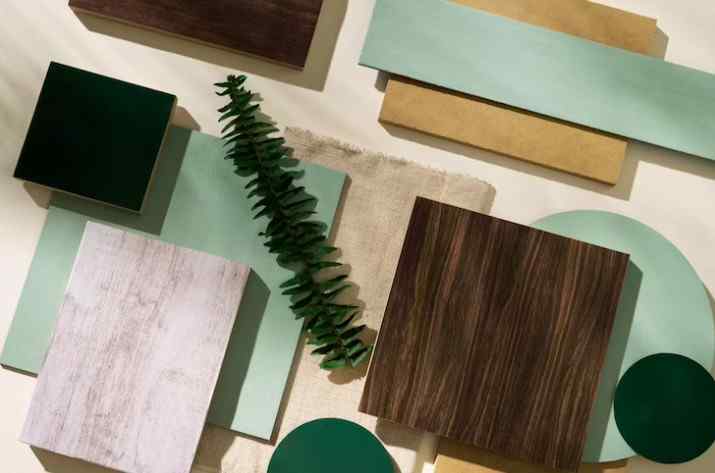
| Aspect | Laminate | Veneer |
|---|---|---|
| Appearance | Mimics various materials but lacks the depth and texture of real wood. | Offers a natural wood look and feel, showcasing unique characteristics like grain patterns, knots, and colour variations. |
| Durability | Resistant to scratches, stains, and fading. Can be susceptible to chipping, peeling, and cracking over time. | Not as durable as laminates but can be easily repaired and refinished. Sanded and refinished, unlike laminates. |
| Maintenance | Easy to clean; requires regular wiping with a damp cloth. | Requires more delicate care to avoid damage from water and heat. Needs regular dusting and occasional polishing. |
| Cost | Generally less expensive, making it a popular choice for budget-conscious consumers. | Tends to be more expensive due to the use of real wood. |
| Design Options | Offers a wide range of colours and patterns, providing versatility in furniture finishes. | Available in various wood species and finishes, each with a unique appearance. Customizable with different stains and sealers. |
Advantages Of Laminate Finish
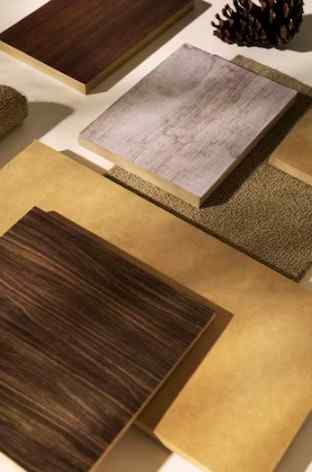
| Advantages | Description |
|---|---|
| Durability | Laminates are highly durable, resisting scratches, stains, and fading. Composed of multiple resin-infused layers, they withstand daily wear and tear and are moisture resistant, ideal for kitchens and bathrooms. |
| Low Maintenance | Requiring minimal upkeep, laminates are easy to clean with just a damp cloth, without needing special treatments, making them suitable for busy environments. |
| Cost-effective | Generally less expensive than veneers or solid wood, laminates offer an economical choice, providing the look of more expensive materials at a fraction of the cost. |
| Design Options | Available in a broad spectrum of colours, patterns, and textures, laminates offer extensive design flexibility, including imitations of wood, stone, or metal, and unique custom patterns. |
| Easy Installation | Laminates are easy to install, a popular choice for DIY projects, applicable to various substrates like MDF or particleboard. |
| Environmentally Friendly | Many laminates are made from sustainable materials and are recyclable, requiring less energy and water in production than solid wood finishes, presenting an eco-friendlier option. |
Disadvantages Of Laminates:
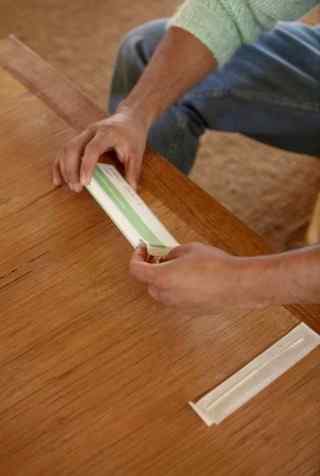
| Disadvantages | Description |
| Appearance | While imitating natural materials, laminates may lack the depth and richness of real wood, stone, or metal, sometimes appearing flat and artificial. |
| Limited Repair Options | Durable yet difficult to repair, damaged laminates (scratches, chips, burns) cannot be sanded or refinished like wood or veneers and often require complete replacement. |
| Heat Damage Susceptibility | Resistant to moisture and stains but vulnerable to heat, laminates can warp or blister under high temperatures, making them less suitable near stoves or ovens. |
| Limited Design Options | Despite a wide colour and pattern range, laminates may lack the natural variations and character of real wood or stone, potentially limiting design uniqueness. |
| Environmental Concerns | Some laminates contain harmful chemicals or adhesives and may not be as biodegradable or recyclable as wood or veneer finishes, raising environmental concerns. |
| Lower Resale Value | Furniture with laminate finishes often has a lower resale value compared to those with wood or veneer finishes, perceived as less valuable and durable. |
Advantages Of Veneer Finish
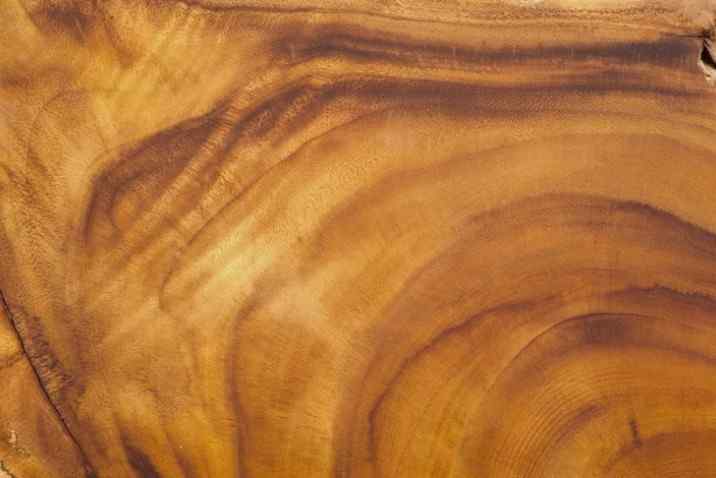
| Advantages | Details |
| Appearance | Made from real wood, offering a natural, authentic look. Unique grains and patterns add character and depth, making them more visually appealing than laminates. Can be stained or painted for a wide range of colours and styles. |
| Durability | Highly resistant to scratches, stains, and moisture. Can be sanded and refinished, allowing for repair and restoration. |
| Environmental Benefits | More environmentally friendly, being made from a renewable resource. Can utilize reclaimed or salvaged wood, reducing landfill waste. |
| Value | Generally more valuable due to the use of real wood, considered a luxurious material. Durability and longevity enhance overall value. |
| Customisation | Offers greater customization, including the choice of wood, staining, painting, and shaping processes. |
Disadvantages Of Veneer vs Laminates
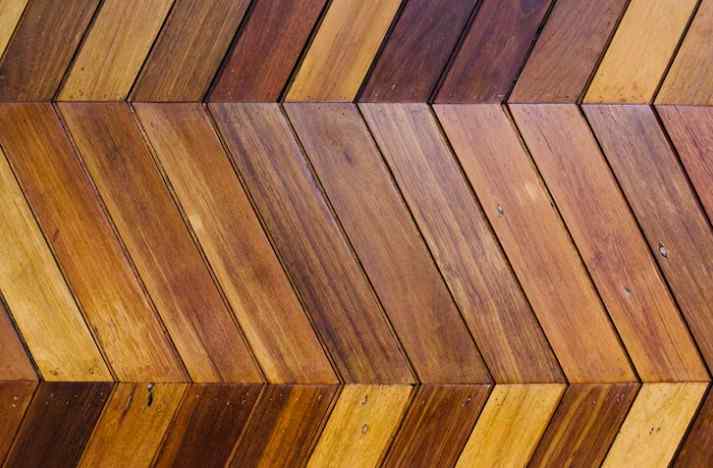
| Disadvantages | Details |
| Cost | More expensive due to real wood usage. Price varies based on wood type, veneer thickness, and finishing complexity. |
| Maintenance | Requires regular maintenance to maintain appearance. Sensitive to scratches, dents, moisture, and temperature changes. |
| Limited Design Options | Restricted by natural wood grains and patterns, offering fewer design options compared to the wide range of colours, patterns, and textures available in laminates. |
| Environmental Concerns | Manufacturing involves adhesives and chemicals, potentially harmful if not disposed of properly. Wood harvesting can contribute to deforestation and habitat loss. |
| Limited Availability | More difficult to find, especially rare or exotic woods, due to dependency on sustainable wood sources. |
Laminate vs Veneer: Which Is A Good Choice For Furnitures
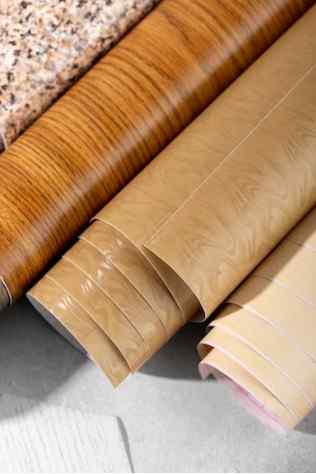
When it comes to choosing the best finish for furniture, there is no one-size-fits-all answer. The choice between veneer and laminate finishes ultimately depends on your personal preferences, budget, and intended use for the furniture.
If you're looking for a cost-effective and durable option, laminates are a great choice. They offer a wide range of design options, are easy to maintain, and can withstand wear and tear over time. They are ideal for high-traffic areas, such as commercial spaces or children's rooms.
On the other hand, if you want a more authentic and natural look for your furniture, veneer finishes are the way to go. They offer a unique and rich grain pattern that can add character and warmth to any space. Veneers are best suited for furniture that is intended for low-traffic areas, such as a bedroom or a formal living room. They require more maintenance than laminates but offer better longevity.
In the end, the choice between veneer and laminate finishes comes down to your personal preference and the specific needs of your furniture. Consider factors such as durability, cost, maintenance requirements, and design options when making your decision
You can also refer to this table for a quick comparison between laminate vs veneer cabinets:
| Feature | Laminate Finish | Veneer Finish |
| Appearance | Mimics the look of various materials, lacks the depth of real wood | Provides a natural wood look and feel that cannot be replicated |
| Durability | Resistant to scratches, stains, and fading, but susceptible to chipping, peeling, and cracking over time | Not as durable as laminates, but can be repaired and refinished more easily |
| Maintenance | Easy to clean and maintain, requiring only regular wiping with a damp cloth | Needs more delicate care, as it can be damaged by water and heat. Regular dusting and occasional polishing are recommended |
| Cost | Less expensive than veneer | More expensive than laminate |
| Design Options | Available in a wide range of colours and patterns | Available in a variety of wood species and finishes |
| Lifespan | Typically shorter than veneers | Longer than laminates |
| Eco-Friendliness | Often made with non-renewable materials and less sustainable | Made with natural and renewable materials, more sustainable |
How Can NoBroker Help?
Choosing the right finish for your furniture is an important decision that can impact the appearance, durability, and overall value of your home or office. Whether you opt for laminate vs veneer finishes ultimately depends on your personal preferences, budget, and intended use for the furniture.
NoBroker Interior Services is a great resource for anyone looking to furnish their home or office with high-quality furniture and finishes. Our team of experts can help you navigate the complex world of furniture finishes and guide you towards the best option for your specific needs. We offer a wide range of services, including custom furniture design, space planning, and installation, to ensure that your furniture fits seamlessly into your space and meets your exact specifications.
So, if you're looking to furnish your home or office with beautiful and functional furniture, look no further than NoBroker Interior Services. With our expertise and commitment to quality, we can help you create the perfect space that reflects your unique style and meets your every need. Contact us today to learn more about our services and how we can help you transform your space.

FAQ's
Ans. Laminate finishes are made of synthetic materials, such as plastic or resin, that are bonded to a substrate, such as particleboard. Veneer finishes, on the other hand, are made of a thin layer of real wood that is glued to a substrate. Laminate finishes tend to be more durable and less expensive than veneer finishes, but veneer finishes offer a more authentic and natural look.
Ans. Yes, laminate finishes tend to be more durable than veneer finishes. They are resistant to scratches, stains, and moisture, making them a great choice for high-traffic areas. Veneer finishes, while beautiful, are more prone to scratches and may require more maintenance over time.
Ans. Yes, you can paint over both laminate and veneer finishes. However, it's important to properly prepare the surface by cleaning and sanding it beforehand to ensure that the paint adheres properly. It's also a good idea to use a primer before applying the paint to ensure a smooth and even finish.
Ans. Laminate finishes are easy to maintain and can be cleaned with a damp cloth or mild soap and water. Veneer finishes require a bit more maintenance and should be dusted regularly with a soft cloth. You can also apply furniture polish or wax to help protect the surface and restore its natural shine.
Ans. Veneer finishes tend to be more expensive than laminate finishes because they use real wood. However, the cost can vary depending on the type of wood used and the complexity of the design. Laminate finishes are generally less expensive and offer a wider range of design options, making them a great choice for those on a budget.
In India, the laminate price per square foot generally falls between ₹50 to ₹200, depending on the quality and pattern complexity.
Veneer ceiling panels are not typically recommended for high-humidity areas due to potential warping and moisture damage.
A laminate finish kitchen typically offers excellent durability, resisting scratches and moisture, making it ideal for busy kitchen environments.
Recommended Reading
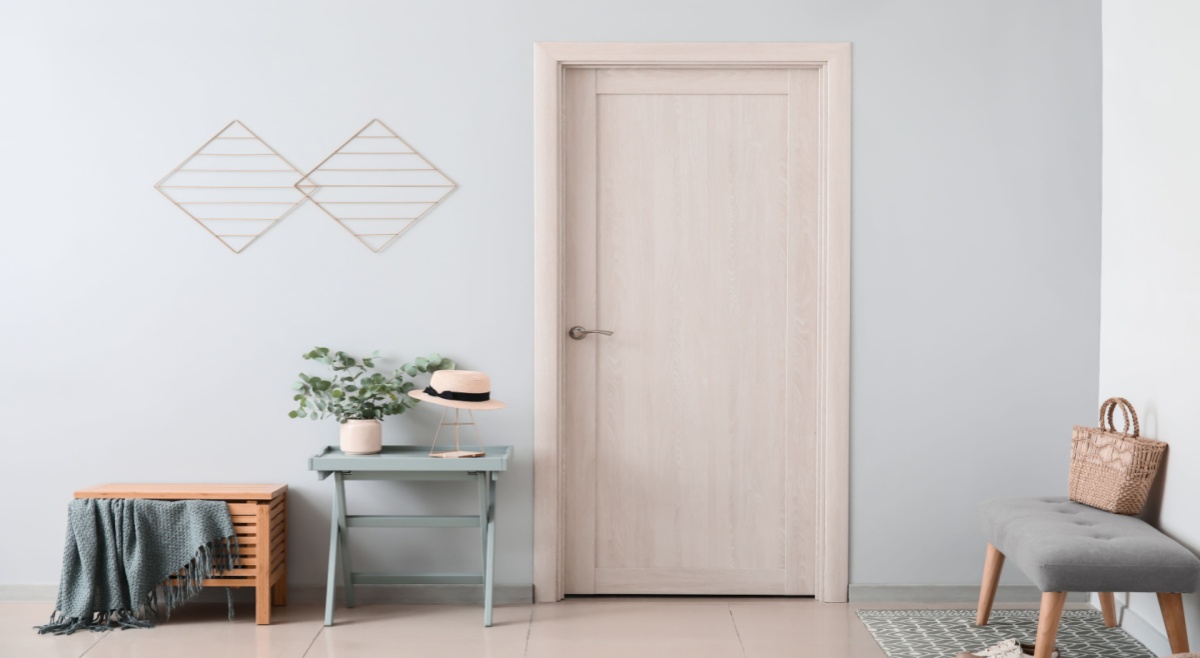
Top 45 Flush Door Designs for a Sleek and Modern Home and Office Interiors in 2025
December 27, 2024
2589+ views
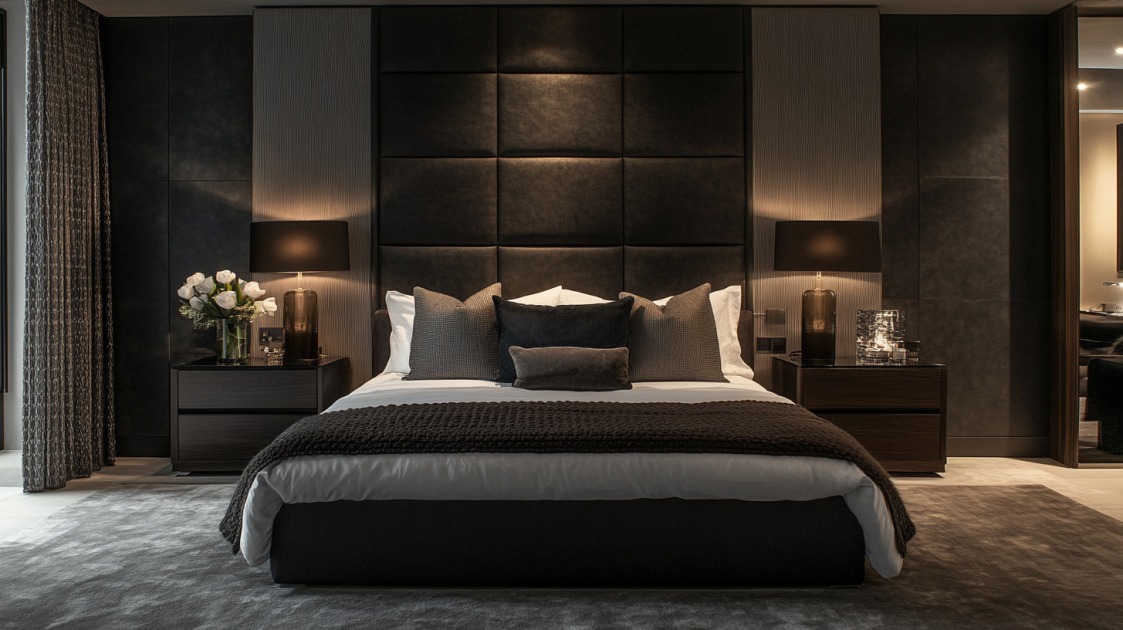
30+ Beautiful Bed Back Design Ideas for Your Bedroom in 2025
December 27, 2024
9667+ views
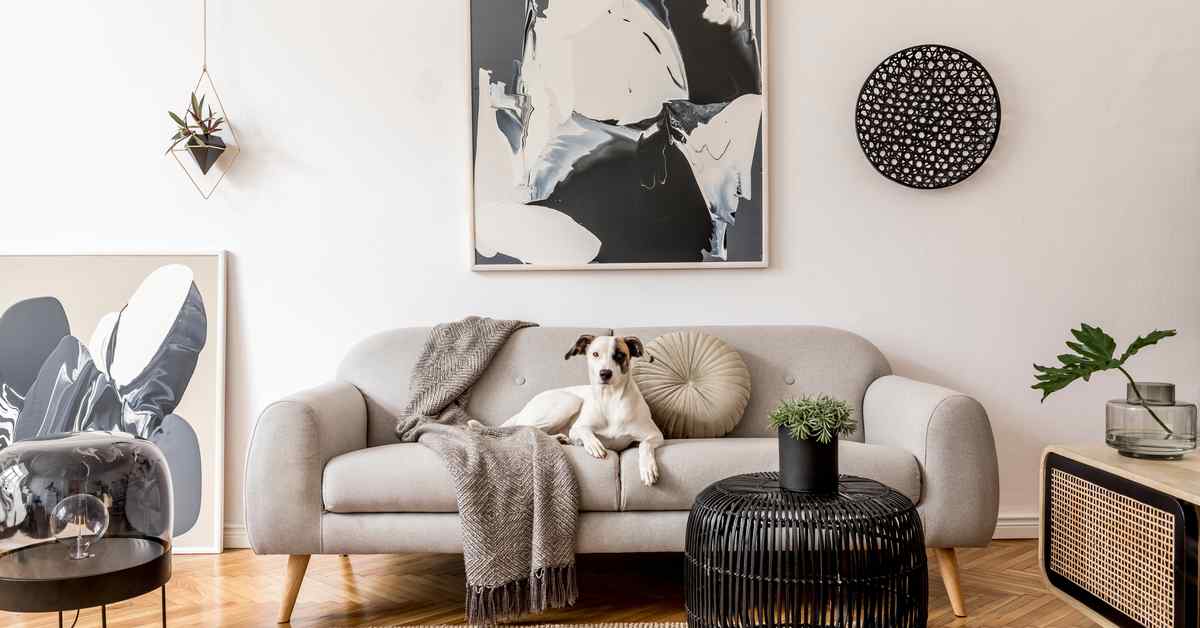
3 BHK Interior Design Cost in India
December 24, 2024
8326+ views
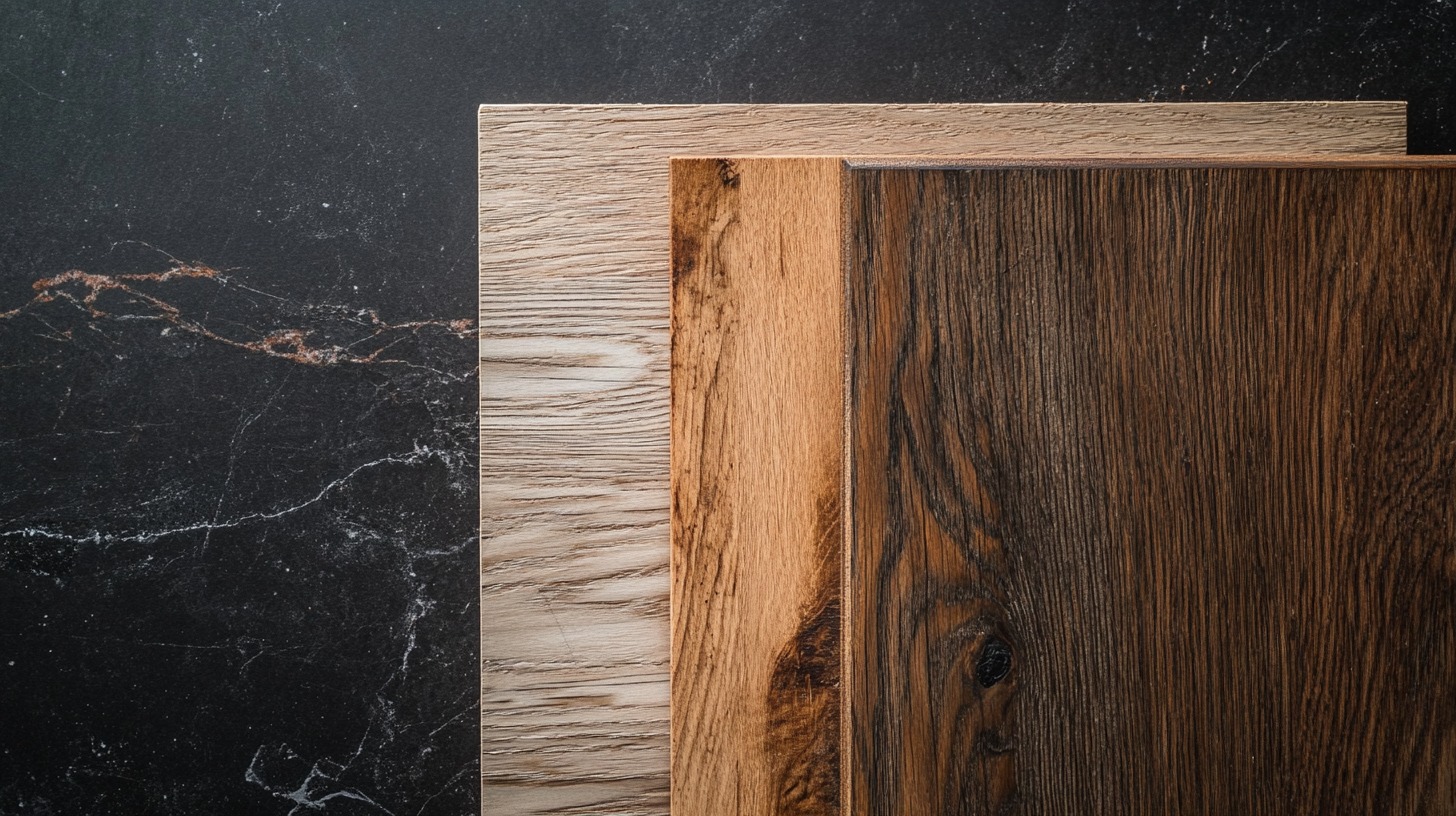
HDHMR Boards vs Plywood: Cost-Effective, Durable, and Sustainable
December 23, 2024
12688+ views
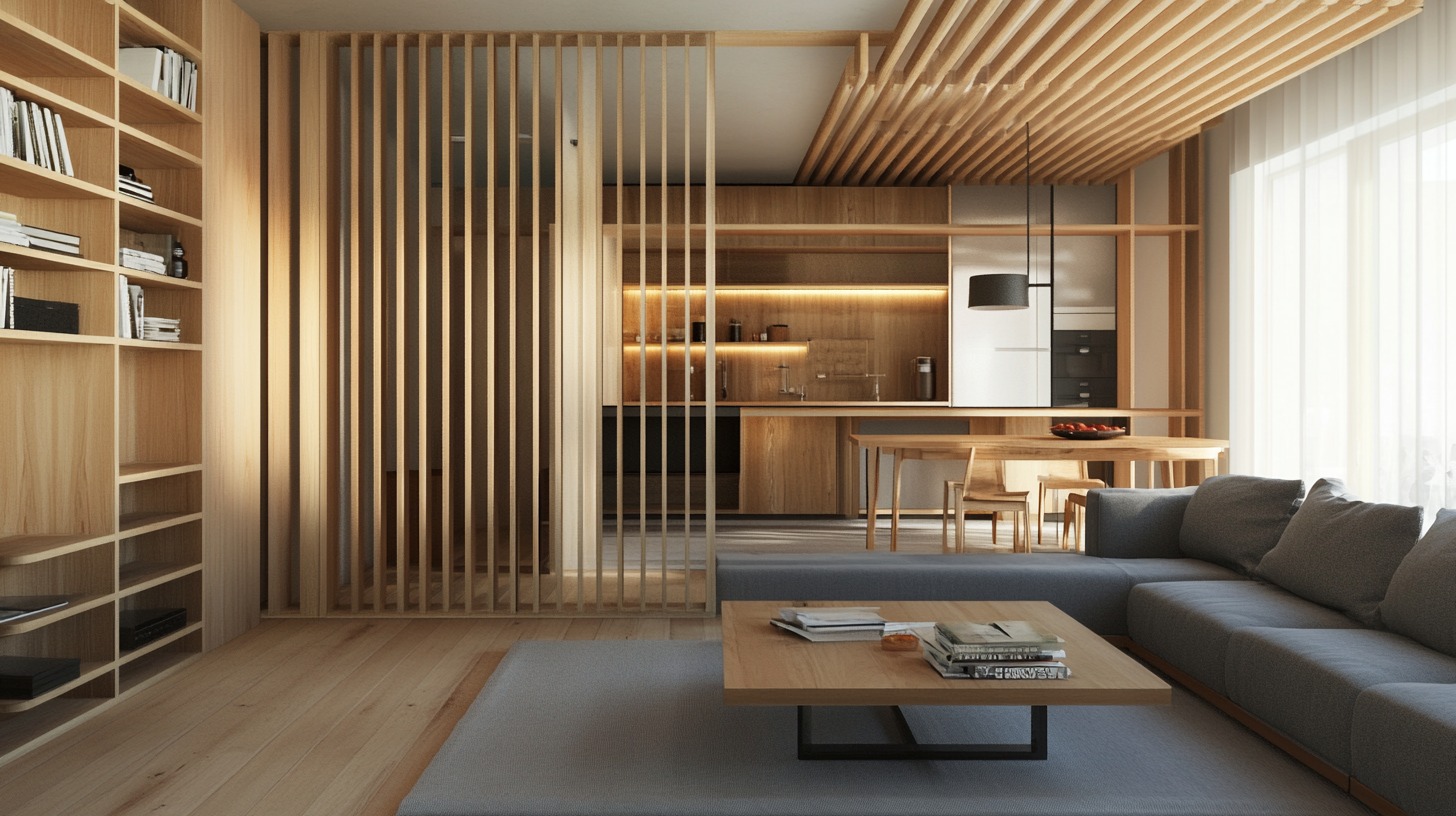
Wooden Partition Walls for Living Room 2025
December 19, 2024
17096+ views
Loved what you read? Share it with others!
NoBroker Interiors Design Testimonials
Most Viewed Articles
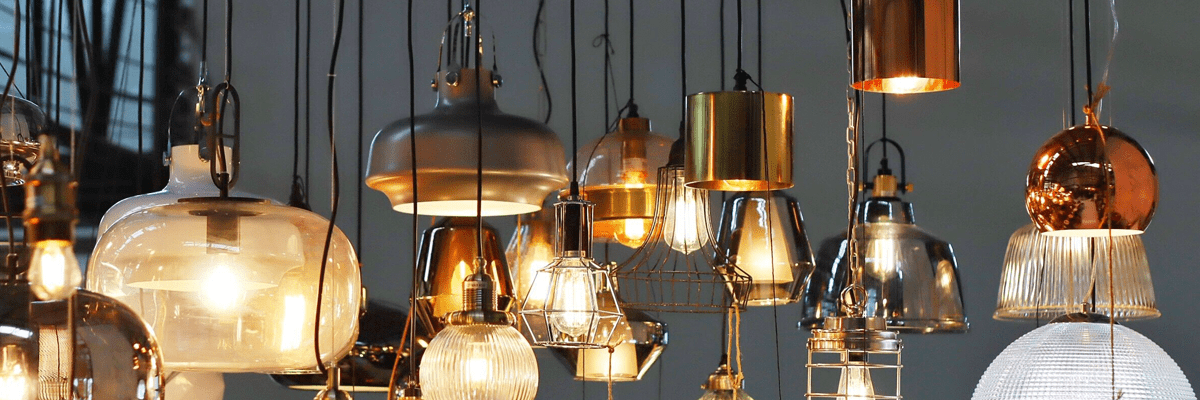
Top Hanging Light Ideas to Illuminate Your House
March 29, 2024
392684+ views

GFRG Panels - A New Technology in Building Construction
August 24, 2023
256446+ views
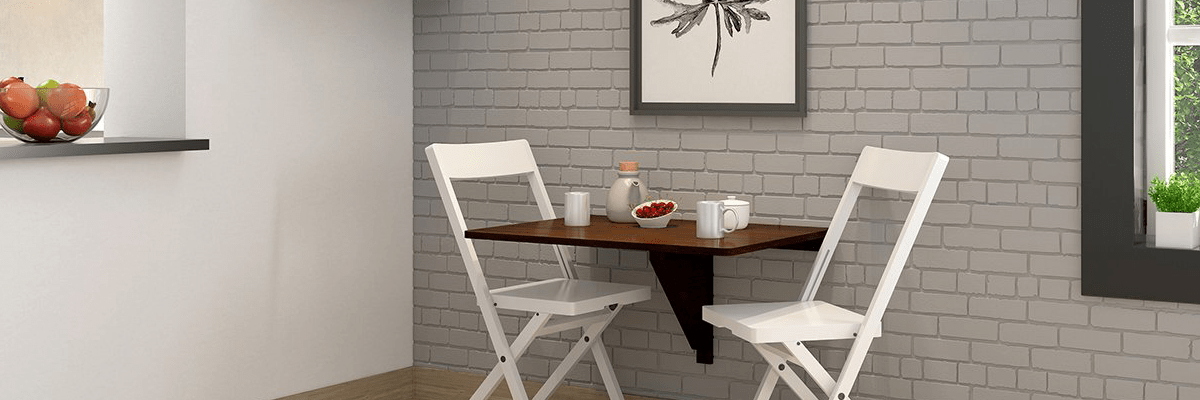
15 Wall-Mounted Dining Table Design Ideas
January 25, 2024
103024+ views
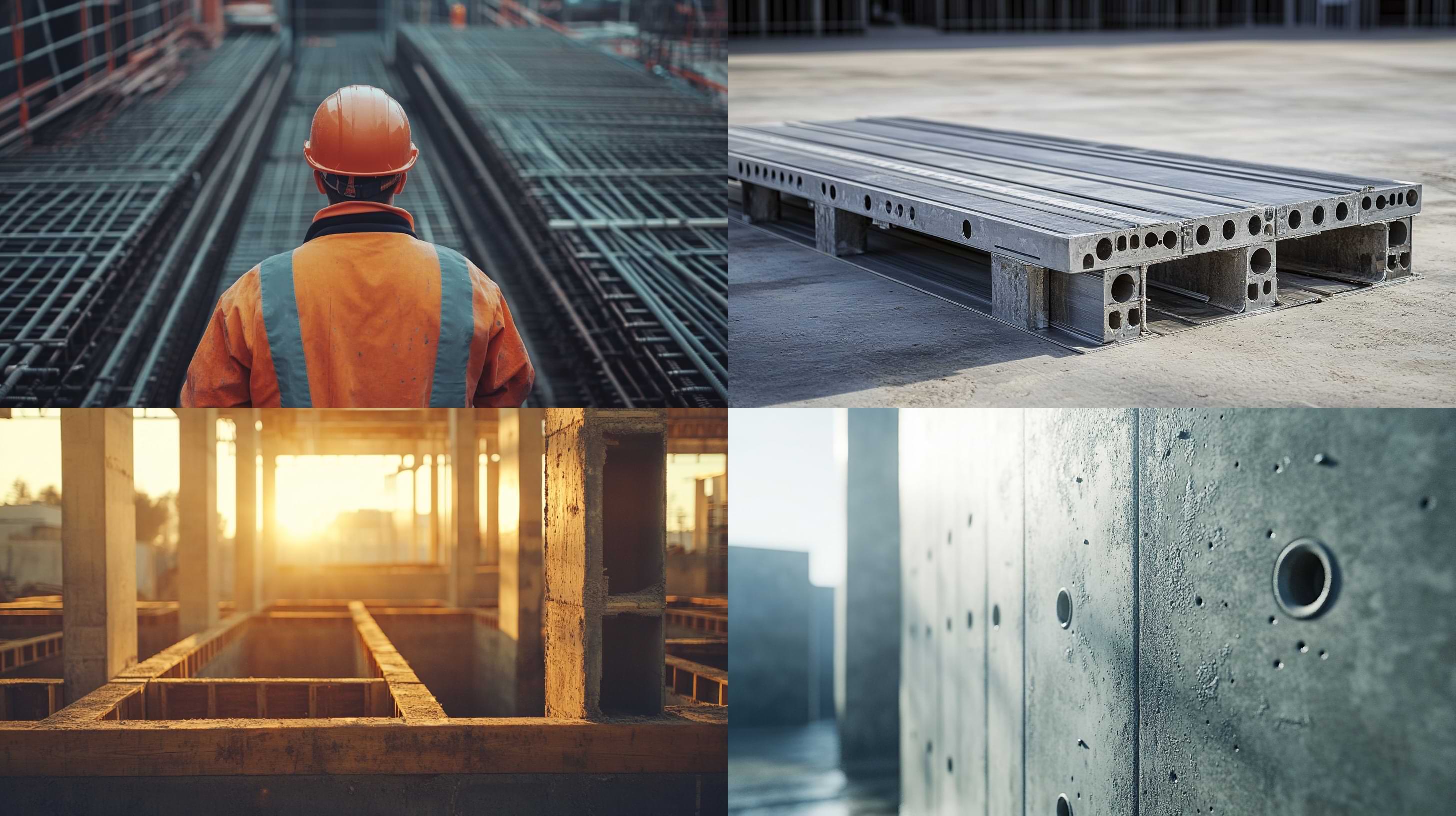
How Mivan Construction Technology Is Transforming the Art of Building!
December 17, 2024
47226+ views
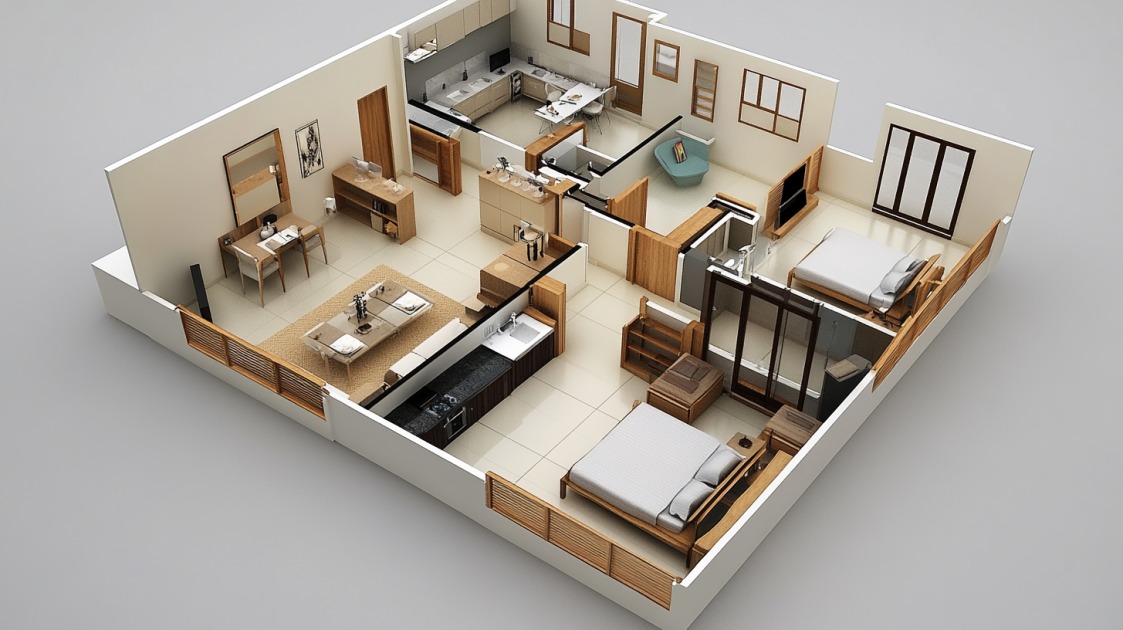
Best 3 Bedroom House Plan: Modern and Space-Efficient Layouts for 2025
December 17, 2024
26947+ views
Recent blogs in
Top 45 Flush Door Designs for a Sleek and Modern Home and Office Interiors in 2025
December 27, 2024 by Ananth
Top 10 Latest and Trendy POP Ceiling Design For 2025
December 27, 2024 by Ananth
The Benefits and Challenges of Using Bamboo as a Building Material
December 27, 2024 by Krishnanunni H M
30+ Beautiful Bed Back Design Ideas for Your Bedroom in 2025
December 27, 2024 by Ananth
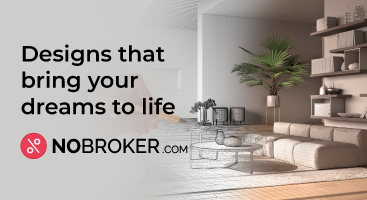


Join the conversation!